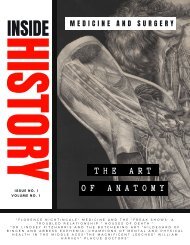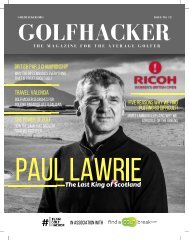Inside History: Protest. Revolt & Reform
For our next issue we take a closer look at the theme of Protest from the events of Peterloo to the fall of the Berlin. Inside we cover a whole range of historical protests and the individuals who led the charge for change. This issues includes: John Brown's raid on Harpers Ferry, The Suffragettes, Billie Holiday and the role music has played in protests, The Civil Rights Movement, Protest and Sport, We are the People: The Fall of the Berlin Wall, Bloody Sunday at Trafalgar Square, and much much more.
For our next issue we take a closer look at the theme of Protest from the events of Peterloo to the fall of the Berlin. Inside we cover a whole range of historical protests and the individuals who led the charge for change. This issues includes:
John Brown's raid on Harpers Ferry, The Suffragettes, Billie Holiday and the role music has played in protests, The Civil Rights Movement, Protest and Sport, We are the People: The Fall of the Berlin Wall, Bloody Sunday at Trafalgar Square, and much much more.
- No tags were found...
Create successful ePaper yourself
Turn your PDF publications into a flip-book with our unique Google optimized e-Paper software.
19th Century
BLOODY
SUNDAY AT
TRAFALGAR
SQUARE
Words: James Hobson
In the autumn of 1887, William Morris
was convinced that the revolution was
imminent. All the signs were there. The
capitalist system that he and other
socialists loathed seemed to be dying.
The mid Victorian boom was over and
the 1880s were a time of rising
unemployment –indeed the word was
first used in this decade. The discontent
was now physically evidenced by the
occupation of Trafalgar Square by the
homeless, desperate and starving. There
were speeches and agitation by socialists,
anarchists and Irish nationalists; the
tricolour, the red flag and the black flag
of anarchy were flying in a space
designed to celebrate Britain’s martial
greatness.
There were regular meetings and
demonstrations by the unemployed and
about five hundred people sleeping in
the square overnight in defiance of police
orders. The unseasonably dry weather
had been lovely for Queen Victoria’s
Golden Jubilee but had led to agricultural
depression and migration into the
capital; the docks and the sugar
refineries were idle and there seemed no
prospect of improvement. The
Conservative government had chosen
coercion in Ireland, and famine and
evictions had raised tensions both in
Ireland and amongst the Irish working
class in East London and other British
cities. Here, according to Morris and
many others, was the raw material that
revolution could be fashioned from. As
one of the members of the new
Socialist movement Morris was
convinced that the revolution was nigh
and that large masses of protesters
would be a catalyst for bringing down
the system he despised so much.
He had another reason to be hopeful.
The masses meeting in Trafalgar Square
had intimidated the authorities a year
earlier, in 1886. A relatively peaceful
mass meeting of the unemployed was
turned into a riot by the desperation of
the poor and the deliberate incitement
of two of Morris’s fellow socialists, Henry
Hyndman and John Burns. They were
part of the Social Democrat Federation,
Britain’s first Marxist political party
(Morris and others had split and
formed the Socialist League). The
meeting had been called by another
organisation, the Fair trade League, who
advocated protectionism as a solution
to mass unemployment; either way, the
economic situation was being exploited
by political agitators.
A tense meeting was turned violent by
this political activism and afterwards
5,000 marched down Pall Mall. ‘To the
clubs’ was the cry, which was not
surprising considering the way that
Burns (and to a lesser extent Hyndman)
had spoken to the crowd. Burns had
allegedly said that hanging was too
good for some people, as it would spoil
the rope, and in a more fatal version of
the eighteenth century cry of ‘bread or
blood’, called for ‘bread or lead’. The
Carlton Club was attacked and shops
raided, and they insulted gentlewomen
openly in the street. It ended up with a
baton charge in Oxford Street which
finally dispersed the demonstrators.
Before the police attack, the shops had
been looted. These became known as
the West End Riots, which was a fair
description of events, but none of it
would have been possible without the
large, flat, unfenced Trafalgar Square as
a focal point.
In the days after the riot there was a
rush on behalf of the rich to help the
poor. Up to now, the Lord Mayor’s
Mansion House Relief Fund had
languished, amounting to less than
£3000 on the day of the riot; two days
later it was £75,000. Hyndman was
18 INSIDE HISTORY

















